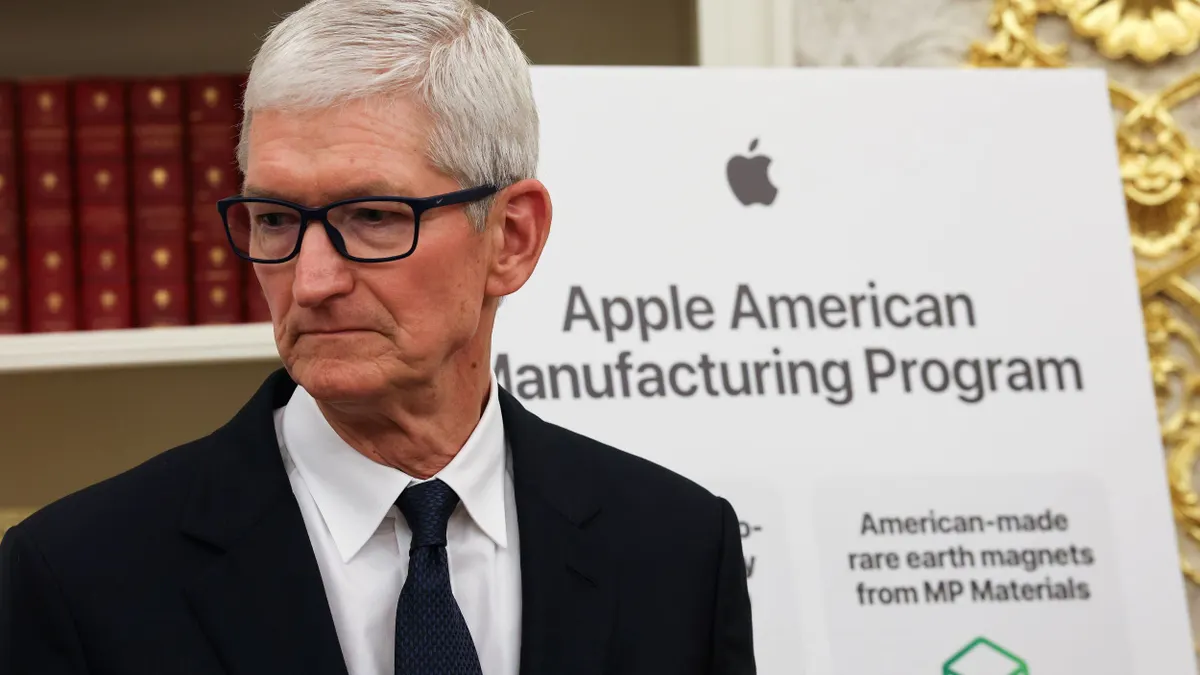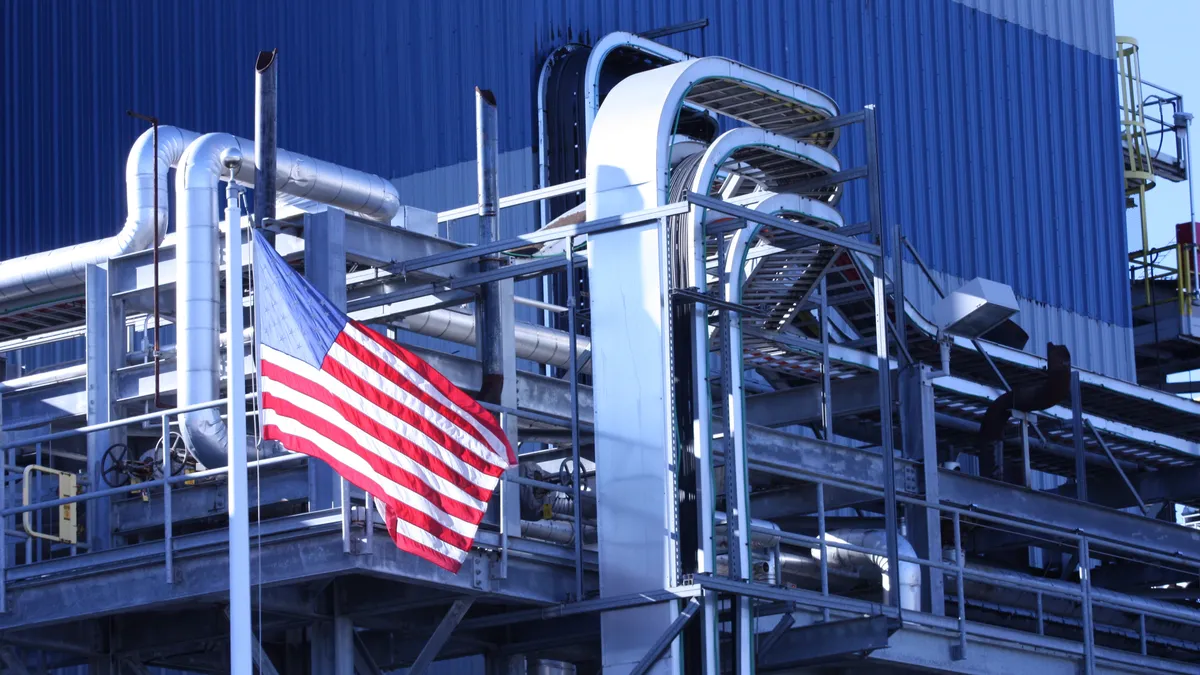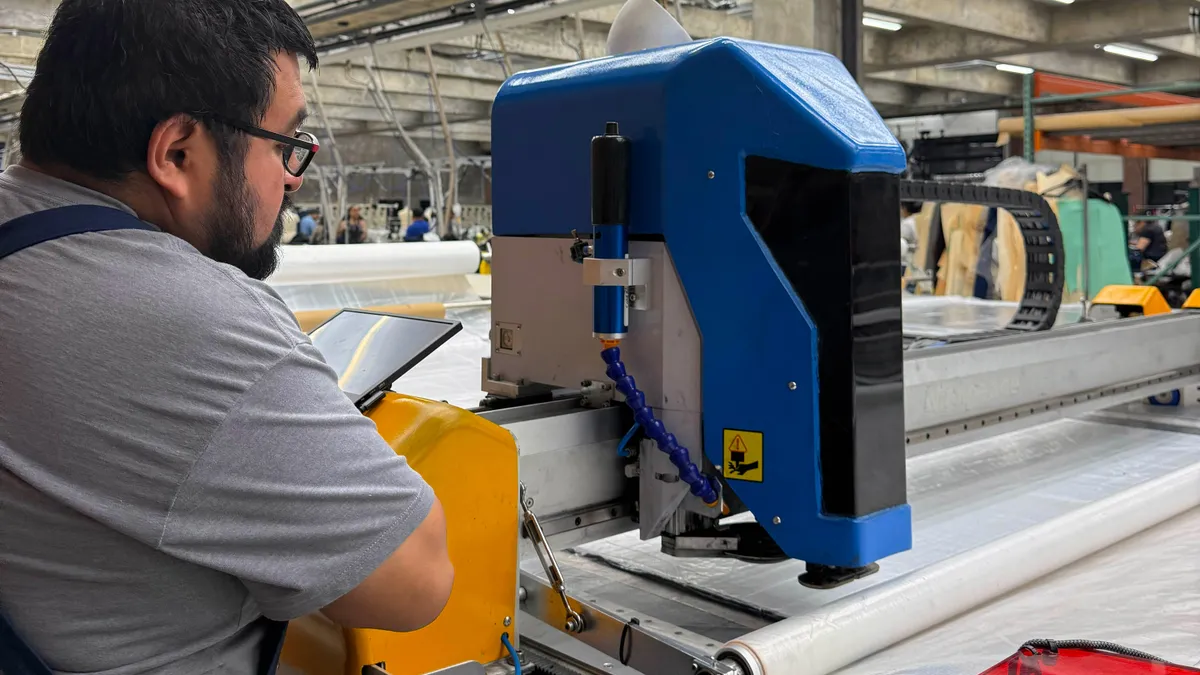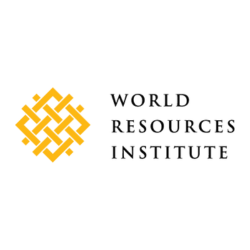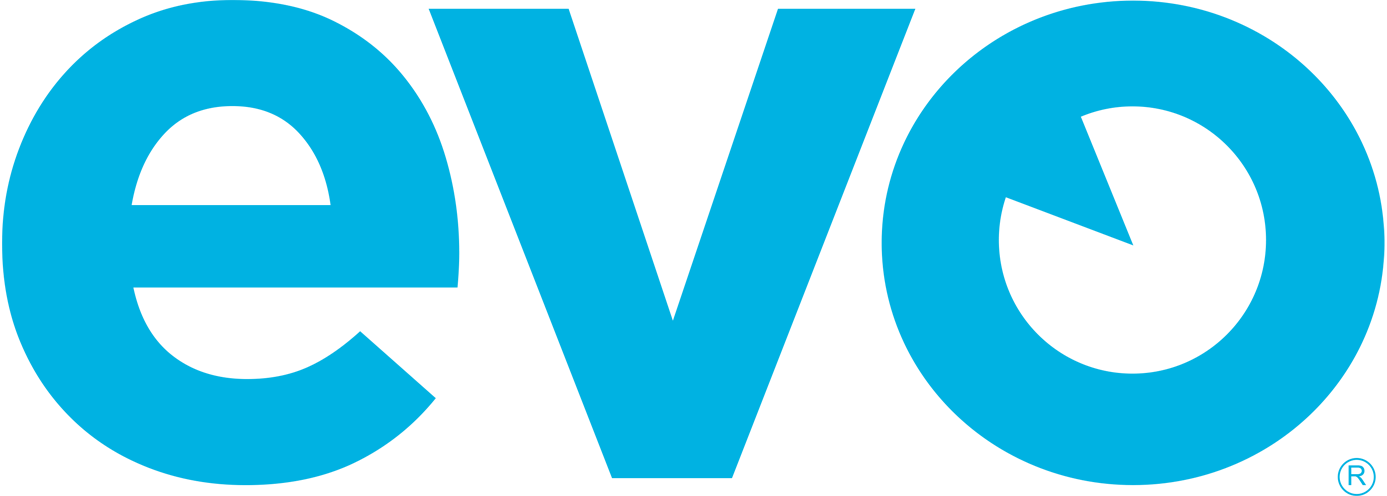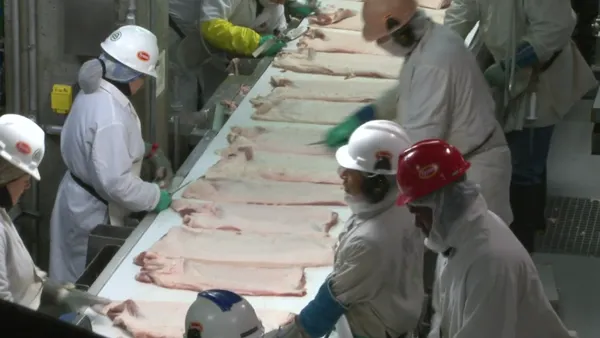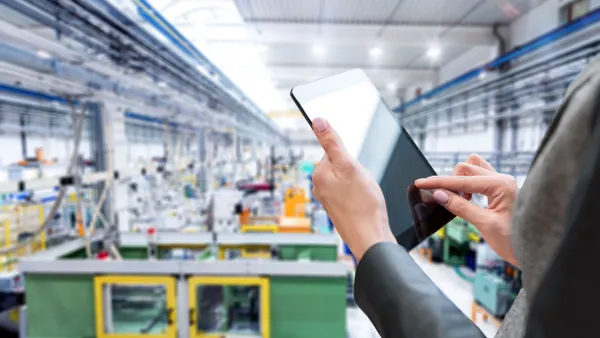Dive Brief:
- Apple is investing an additional $100 billion in U.S. manufacturing that will fund expansions across 10 states, the company announced on Wednesday afternoon.
- The company is also launching the American Manufacturing Program, which aims to bring more of Apple’s supply chain to the United States and incentivize its international suppliers to establish manufacturing operations in the country.
- Additionally, the consumer electronics company plans to hire 20,000 people in the U.S. in the next four years, with the vast majority focused on research and development, silicon engineering, software development, artificial intelligence and machine learning.
Dive Insight:
Apple’s U.S. investment adds to the $500 billion previously announced in February, which is “already yielding results,” Apple CEO Tim Cook said at the White House announcement on Wednesday.
The company broke ground on a new factory in Houston earlier this year that will manufacture AI servers. Last month, the first test unit rolled off the production line and the 250,000-square-foot facility is set to begin mass production in 2026, according to the release.
Despite the multibillion-dollar pledge earlier this year, Trump threatened to implement at least a 25% tariff on Apple in a May 23 post on Truth Social.
“I have long ago informed Tim Cook of Apple that I expect their iPhone’s that will be sold in the United States of America will be manufactured and built in the United States, not India, or anyplace else,” Trump said in the post.
Apple has hit the ground running to draw its supply chain to the U.S. with the new American Manufacturing Program, which “will spur even more production right here in America for critical components used in Apple products all around the world,” Cook said on Wednesday.
For one, Apple is committing $2.5 billion through the AMP funding to produce all of the cover glass for its iPhones and Apple Watches at Corning’s manufacturing facility in Harrodsburg, Kentucky. Furthermore, glassmaker Corning will shift the facility’s focus entirely to manufacturing for Apple. The two companies also plan to establish an Apple-Corning Innovation Center at the Harrodsburg plant, which will prioritize the development and engineering of advanced materials and new manufacturing platforms for Apple’s future products.
The AMP initiative is also helping Apple to create an end-to-end silicon supply chain, making agreements with some of the most prominent semiconductor and component manufacturers in the U.S. The first of Apple’s partners includes Coherent, GlobalWafers America, Applied Materials, Texas Instruments, Samsung, GlobalFoundries, Amkor Technology and Broadcom. Some of Apple’s suppliers, such as Texas Instruments and GlobalFoundries, have also announced multi-billion-dollar investments in the past year to expand their facilities in the U.S. as well as reshore their operations.
Taiwan Semiconductor Manufacturing Co., Apple’s biggest supplier, has taken steps to bring its production to the U.S. Earlier this year, the chipmaker announced it had pledged to increase its investment to $165 billion in expanding its manufacturing capacity.
“We’re committed to supporting U.S. suppliers involved in every key stage of the chip-making process — from the earliest stages of research and development, to final fabrication and packaging,” Apple COO Sabih Khan said in a statement. “We want America to lead in this critical industry, and we’re expanding our efforts to grow a silicon manufacturing ecosystem that will benefit innovators across America.”
The manufacturing program builds on Apple’s $500 million purchasing and development deal with rare earth materials miner and processor MP Materials, according to the press release.
While a lot of the components for Apple’s products will be made in the U.S., final assembly will be completed “elsewhere for a while,” Cook said at the White House.
Apple outsourced its manufacturing of hardware products, which are located primarily in China, India, Japan, South Korea, Taiwan and Vietnam, according to an annual securities filing. Overseas suppliers also perform the final assembly and testing of the finished products as well as provide individual components. Moreover, Apple has $44.1 billion of supplier contracts as of June 28, according to the company’s third quarter securities filing.
Cook has explained in the past why much of Apple’s production is done overseas, particularly in China, stating that the quantity and certain skills are necessary to manufacture its products.
“The tooling skill is very deep [in China],” Cook said. “In the U.S., you could have a meeting of tooling engineers and I'm not sure we could fill the room. In China, you could fill multiple football fields.”
Apple’s increased investment comes a week after its fiscal Q3 earnings release, which saw its net sales increase 8.2% year over year to $66.6 billion. Net sales after nine months also rose 3.7% to $233.3 billion compared to the same period last year. The results were driven by double-digit growth across iPhone, Mac and Apple services, Cook said in a July 31 earnings call.
Despite the growth, the company expected to pay heavily for tariffs. Apple incurred approximately $800 million in tariff-related costs in Q3 and anticipates incurring an additional $1.1 billion in Q4 if global trade rates and policies remain unchanged, Cook said on the call.
Another factor that could incur duty costs is the Commerce Department’s Section 232 investigations into semiconductor imports, according to a securities filing.
In addition to the Apple announcement made on Thursday, Trump said he plans to implement a 100% tariff rate on imported semiconductors.
“But the good news for companies like Apple is if you're building in the United States, or have committed to build, without question, permitted to build in the United States, there will be no charge,” Trump said.
Elsewhere in the U.S., the company is expanding its data center capacity in Maiden, North Carolina, by building a facility to support North American users of Apple’s services. The expansion builds on the more than $5 billion Apple has invested in the site, which supports Apple’s services such as the iCloud, the App Store, Apple TV+, iMessage as well as aiding in growing its AI system. Apple is also expanding its data center capacity in Iowa, Nevada and Oregon.
The Apple Watch maker is also building a second campus in Austin, Texas. The project comprises three buildings, including an R&D lab space for Apple’s hardware and software engineering teams.
Apple and Michigan State University are set to jointly open the Apple Manufacturing Academy Aug. 19. The academy is part of the company’s multibillion-dollar manufacturing fund that will help small and medium-sized businesses improve their operations.



